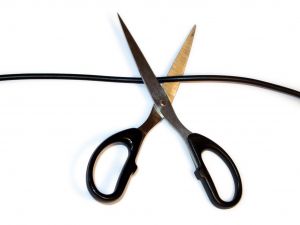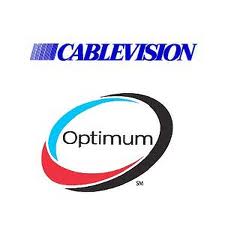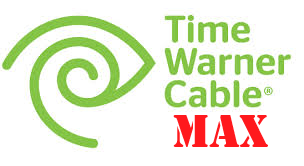 Cord-cutting is a real, measurable phenomena and is especially common among those under 30 who don’t care about traditional cable television service.
Cord-cutting is a real, measurable phenomena and is especially common among those under 30 who don’t care about traditional cable television service.
Those are the views of Verizon’s chief financial officer Fran Shammo, speaking this week at the Wells Fargo 2013 Tech, Media & Telecom Conference in New York.
Shammo told investors Verizon FiOS subscriber numbers showed the company has an excellent position in the broadband market because it is the only national provider other than Google offering fiber-to-the-home service.

Verizon TV customers are regularly encouraged to upgrade to 50Mbps Quantum service with a push of a button on their remote control.
“Broadband is absolutely key,” said Shammo. “Most of our customers are taking our 50Mbps [FiOS Quantum] or higher speed and part of that is because you need that speed inside the home [to support] your wireless devices that run off of Wi-Fi. If you’re running hot water with five people, you are eventually going to slow down the hot water and it is going to run cold. The same thing happens when you are running five wireless devices over your Wi-Fi network.”
Shammo said as more online video becomes available people will gradually shift more of their viewing time away from traditional television.
“We’re also seeing fewer people taking [our cable television] product,” said Shammo. “They really want the broadband speed and if you look at the demographics, those 30 and below don’t care if they have linear TV. They are looking at getting their content through other means.”
Shammo said he doesn’t necessarily have a problem with that because heavy online viewing will stimulate upgrades to faster Verizon FiOS Internet speeds.
“We invested in FiOS for broadband and for television and we think we have a superior product,” said Shammo. “But we’re smart enough to realize that the ecosystem will eventually change and people are bringing content in over-the-top. We want to make sure we have the fastest — the best broadband […] and we believe we have the best linear TV product but we know that over the top video is going to become more popular.”


 Subscribe
Subscribe
 All three companies have attempted price increases over the last few years with mixed results. Cablevision’s eight percent rate hike on broadband this year may have been too much for some customers who shopped around and found a better deal with the phone company.
All three companies have attempted price increases over the last few years with mixed results. Cablevision’s eight percent rate hike on broadband this year may have been too much for some customers who shopped around and found a better deal with the phone company. Set-top box-less Time Warner Cable subscribers in parts of New York City will find more than 90 percent of the basic cable lineup missing from their QAM-equipped televisions as the cable company completes a transition away from analog cable television and begins encrypting almost all its digital channels.
Set-top box-less Time Warner Cable subscribers in parts of New York City will find more than 90 percent of the basic cable lineup missing from their QAM-equipped televisions as the cable company completes a transition away from analog cable television and begins encrypting almost all its digital channels.

 Time Warner Cable customers in Los Angeles, New York, and Hawaii subscribed to the company’s top 50/5Mbps Ultimate speed tier
Time Warner Cable customers in Los Angeles, New York, and Hawaii subscribed to the company’s top 50/5Mbps Ultimate speed tier 